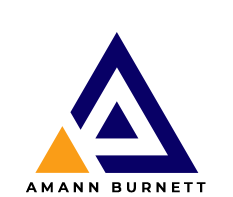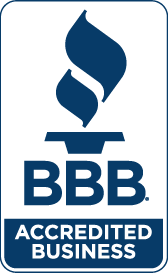Sub V Plan with Non-debtor Release Approved over Opposition from Affected Investor Class: 11 USC § 1191 CramDown

In re Hal Luftig Co., 22-11617 (Bankr. S.D.N.Y. November 22, 2023).
If the Supreme Court decides in Purdue that bankruptcy courts can issue nondebtor, nonconsensual, third-party releases, and if the district court approves the report and recommendation by Bankruptcy Judge John P. Mastando, III, Subchapter V will have a new, dramatic purpose: Procuring multimillion-dollar releases for the owners of small businesses when the businesses themselves have little other debt.
The corporate debtor was a notable Broadway producer. An individual was the sole owner and president of the corporate debtor.
An investor claimed it had not received its share of the income from a pair of productions. So, the investor initiated an arbitration against the corporate debtor and the owner. The arbitrator gave the investor an award of $2.9 million against the debtor and the owner, jointly and severally. The district confirmed the award, which was automatically stayed for thirty (30) days.
On the 29th day, the debtor corporation filed a chapter 11 petition under Subchapter V. The debtor filed an adversary proceeding and persuaded Judge Mastando to enter a preliminary injunction preventing the investor from enforcing the arbitration award against the owner.
The Plan
The debtor filed a chapter 11 plan to discharge the debtor’s debt owing to the investor and give the owner a release from liability on the $2.9 million arbitration award. In return, the plan called for the owner to supply $600,000 toward payments under the plan.
The plan called for paying about $275,000 in secured and priority claims in full on confirmation. The unsecured investor with its $2.9 million claim was in a class of by itself and would receive a portion of the cash from the owner, plus a share of the debtor’s disposable income over the life of the five-year plan.
Unsecured creditors with about $300,000 in claims would receive a pro rata share of the debtor’s disposable income for the duration of the plan. The owner would receive no distribution but would retain ownership.
The plan required the owner to continue working for the debtor while spending half of his time on the debtor’s affairs. In return, the debtor would be paid an annual salary of $210,000.
The unsecured class voted in favor of the plan, but the investor class voted against the plan, requiring Judge Mastando to consider confirmation as a cramdown under Section 1191(b).
In his November 22 opinion, Judge Mastando found jurisdiction to confirm the plan over objections by the investor and the U.S. Trustee. However, he read the Second Circuit’s decision in In re Purdue Pharma LP, 69 F.4th 45 (2d Cir. May 30, 2023), cert. granted sub nom. Harrington v. Purdue Pharma L.P., No. (23A87), 2023 WL 5116031 (U.S. Aug. 10, 2023), as requiring him to issue a report and recommendation to the district court regarding confirmation of the plan. (Note: Purdue will be argued in the Supreme Court on December 4.)
Because the arbitration award was a joint several liability of the debtor and the owner, Judge Mastando concluded that the plan would be a release of the investor’s “direct” claims against the owner.
The Objections
Objecting to confirmation, the U.S. Trustee called the plan “abusive” and said it was not a “rare or unusual” case to warrant confirmation under Second Circuit authority. Judge Mastando quoted the U.S. Trustee as characterizing the release in favor of the owner as forcing “‘an involuntary settlement upon [the owner’s] primary creditor.’”
In objecting to confirmation, the investor contended that the plan would give the owner a “multimillion dollar gain” while causing the investor a “large financial loss.” To the owner’s way of thinking, a 37% recovery was not “fair payment.”
Judge Mastando Confirms the Plan
Judge Mastando began his analysis of contested confirmation by quoting the Second Circuit in Purdue as “consistently” holding “that bankruptcy courts may approve non-consensual third-party releases of direct claims against a non-debtor so long as the release ‘plays an important part in the debtor’s reorganization plan.’ See Purdue, 69 F.4th 45, 75–77 (2d Cir. 2023).” In his 65-page opinion, he proceeded to analyze the seven requisites in Purdue for confirmation of a plan with nonconsensual, nondebtor releases of direct claims.
Among the more pivotal Purdue tests applicable to the case before him, Judge Mastando dealt with them as follows:
Necessity for Successful Reorganization
While a plan “might” be confirmed without the releases, Judge Mastando said that success of the debtor’s business was “almost entirely dependent” on the owner’s continued participation that would be “severely” endangered were the investor to enforce the arbitration award against the owner.
The Owner’s ‘Substantial’ Contribution
Judge Mastando found that the owner’s cash contribution and his commitment to work for the debtor after confirmation were “substantial.”
‘Overwhelming’ Support from the Affected Class
Judge Mastando conceded that the investor class’s opposition meant that support from the class was “indisputably not ‘overwhelming.’”
“Nevertheless,” Judge Mastando said that the investor’s objection “has little weight as to the propriety of a non-consensual third-party release here,” based on two findings. First, he said that Subchapter V “itself contemplates the confirmation of a plan without the consent of any creditor.”
Second, Judge Mastando apparently substituted his judgment for the investor’s by saying “that the Plan is the best possible means of enabling [the investor’s] recovery.”
‘Fair’ Payment for Enjoined Claims
Judge Mastando found “that the Plan would provide all creditors with more than they would be able to collect from either the Debtor or [the owner] in any other situation.” Finding that the plan would eliminate the cost and uncertainty were the investor to attempt collecting the award from the owner, he found “that the Plan provides for fair and equitable payment of the Released Claims.”
Equitable Considerations
Judge Mastando found that “equity” supports confirmation of the plan with its non-debtor releases, in part because the owner and other creditors “will receive more under the Plan than in a chapter 7 proceeding, or in the event [the owner] filed for bankruptcy himself.”
Judge Mastando rejected the U.S. Trustee’s contention that the case did not present “exceptional circumstances.” He also disagreed with the investor’s contention based on the idea that it was not a “high-profile” mass tort case where “the vast majority” supported the plan.
Judge Mastando nonetheless found the case to be “unique” and “exceptional” because the investor was “apparently willing to . . . derail a Plan that would purportedly optimize its own recovery (and the recovery of every other creditor) in order to either drive the Debtor into Chapter 7 or drive the Debtor’s principal into bankruptcy himself.” [Emphasis in original.]
Provided that the debtor makes a minor modification in the plan, Judge Mastando overruled objections to the plan while reporting and recommending that the district court confirm the plan.
Observations from American Bankruptcy Institute’s Editor, William Rochelle
- Will the district court consider Judge Mastando’s recommendation before the Supreme Court rules on Purdue?
- Even if the Supreme Court affirms Purdue and finds authority for bankruptcy courts to issue nondebtor releases, the district court must still consider whether Subchapter V has a peculiar attribute allowing the imposition of nondebtor releases despite overwhelming opposition from the affected class.





